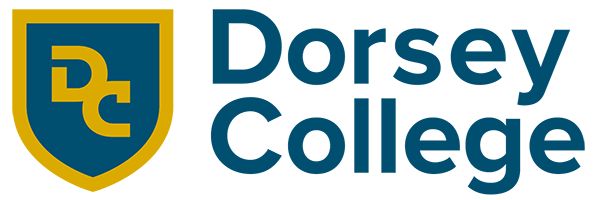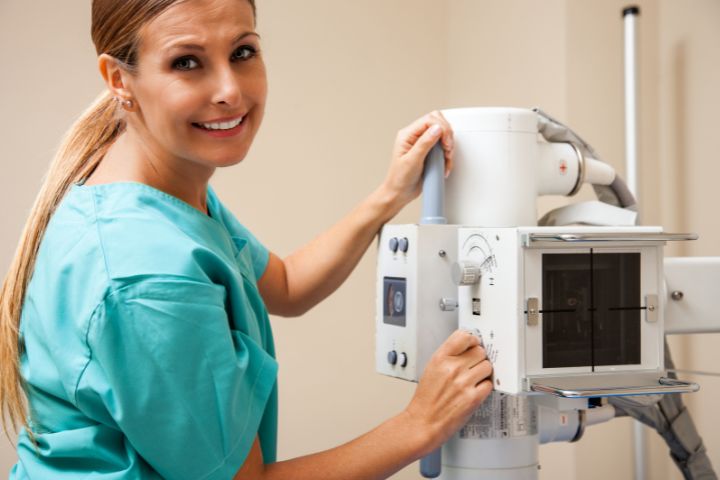Have you ever broken a bone or needed to go to the hospital for a medical scan? Hopefully not, but if you have, chances are you’ve benefited from the behind-the-scenes heroes who are radiologic technologists. Radiologic technologist duties include operating X-ray machines and scanners that create diagnostic images of patients, as requested by doctors and other healthcare professionals.
If this sounds like the career for you, let’s jump in and explore the rad tech duties you could master in this new career. Where you too, could soon be working within the healthcare industry as a valued medical professional using advanced diagnostic tools to ensure fast and efficient patient treatments.
Learn more about Dorsey College’s Radiologic Technologist program today!
What is a radiologic tech exactly?
As highly skilled members of the healthcare profession, radiographers and radiologic technologists are critical in the advanced imaging of the internal structures of the human body. However, radiologic technologist duties aren’t just limited to taking X-rays of broken bones.
Additionally, just as a professional photographer suggests poses and stances when taking pictures, a rad tech’s duties include positioning patients and taking accurate images of the affected area. The results of these diagnostic imaging processes are then submitted to your healthcare colleagues, who use them to diagnose, detect, and identify diseases and other health issues.
Radiologic technologist duties and responsibilities
Fortunately, the role of a radiologic technologist isn’t just limited to taking scans and X-rays – far from it. In fact, the technologies you’ll use, as part of your radiologic technologist duties, and the different medical facilities where you could soon be working are what make the vocation so exciting.
As you can imagine, the X-ray medical diagnosis equipment radiologic technologists use varies but that’s where studying at an accredited rad tech training program and/or school becomes invaluable. The topics you are exposed to can include:
- X-ray Radiography
As the most common diagnostic tool, X-ray imaging is a popular specialty used to capture images of the human skeleton and certain soft tissues. Using electromagnetic radiation, your role as a radiologic technologist includes setting up and adjusting the X-ray machines before talking to, preparing, and positioning patients throughout the process.
- Image Quality
Another element of your radiologic technologist duties will be positioning patients and the scanning equipment to accurately capture the best X-ray or imagery. This ensures the images captured detail the exact area of interest your medical colleagues have requested by actively reviewing, evaluating, and recording the images and patients’ records in real-time.
- Patient Safety/Comfort
Additionally, as a trained specialist in radiography, your role as a rad tech is to ensure the safety of the patient and you and your colleagues at all times. This includes maintaining radiation safety and substance protocols and using lead aprons, shields, and other protective devices when required.
Where could you work?
Choosing to pursue a career as a radiologic technologist can open doors to a wide variety of healthcare work environments, too. And while your rad tech duties may vary depending on where you work, you could soon seek employment in:
- Local, state, and private hospitals
- Physicians’ offices
- Diagnostic imaging facilities
- Outpatient and rehabilitation clinics
- Ambulatory and urgent care centers
Ready to find out how to pursue this career?
We have now explored the technologies, the radiologic technologist duties involved, and the various healthcare settings where you could work. If this sounds like the career for you, then your first step is to find an accredited radiologic technology college or school.
Enrolling in a radiologic technologist training program is not only designed to teach you the fundamental elements needed to thrive in this profession in the healthcare sector. But it can also accelerate your career by providing the knowledge and practical hands-on clinical experience to challenge the American Registry of Radiologic Technologists (ARRT) registry examination.
Passing the ARRT registry exam not only demonstrates you’ve mastered the necessary skills to complete the radiologic technologist duties demanded of the role… but it can also enhance your professional credentials to prospective healthcare facilities hiring managers.
Dorsey College’s radiologic technologist program
Kick-off a new career as a radiologic technologist with training from Dorsey College today. Enrolling in our radiologic technologist program could be the launch pad to pursue your radiologic technologist career. Here at Dorsey College, our curriculum in the Associate of Applied Science in Radiologic Technology program can teach you the fundamental elements to prepare you for your career. Our team of educators are here to help you succeed. If you want to become an essential team member of any radiography healthcare facility, becoming a radiologic technologist could be your dream career move. Learn more about how Dorsey College can help you achieve this dream.

